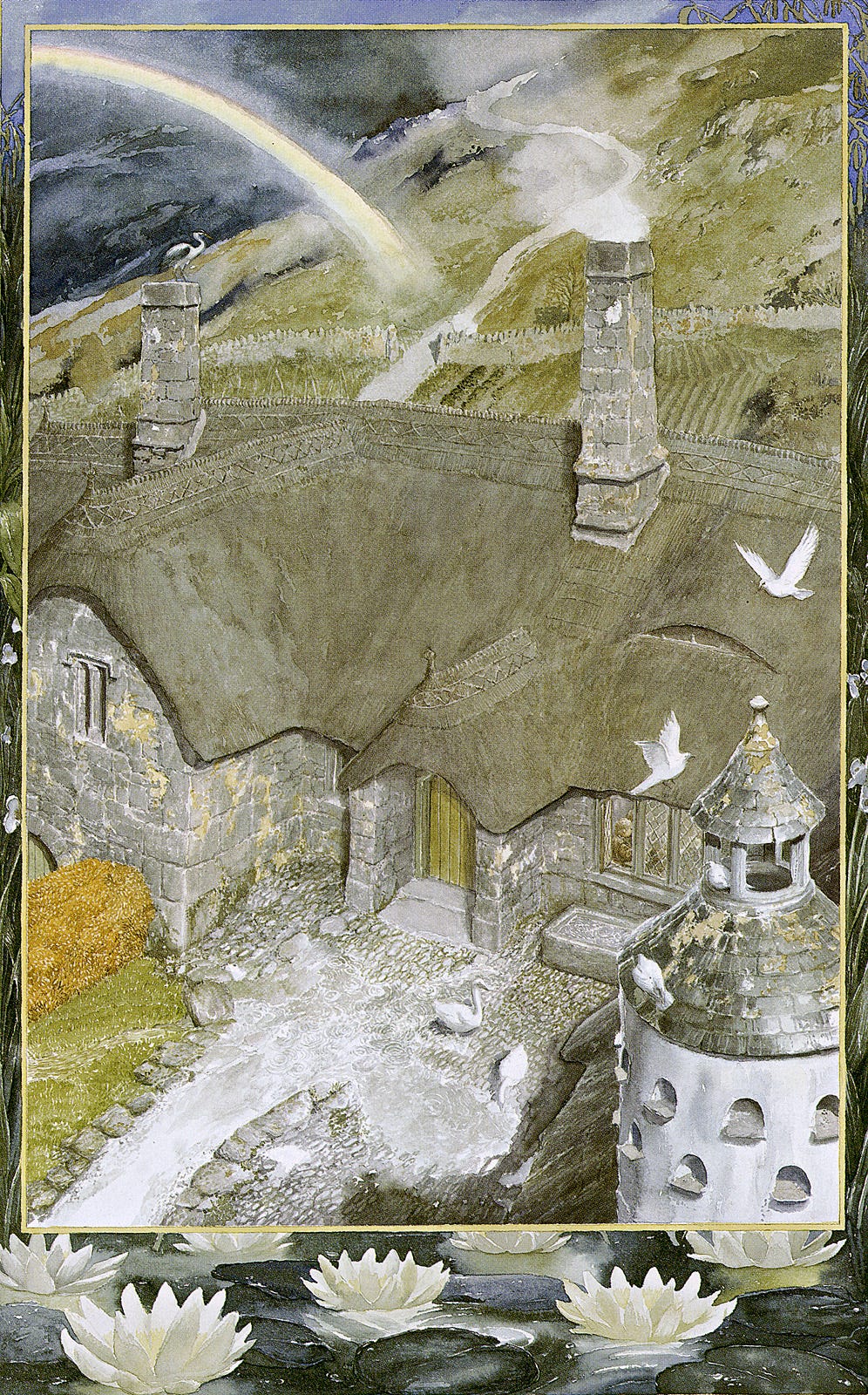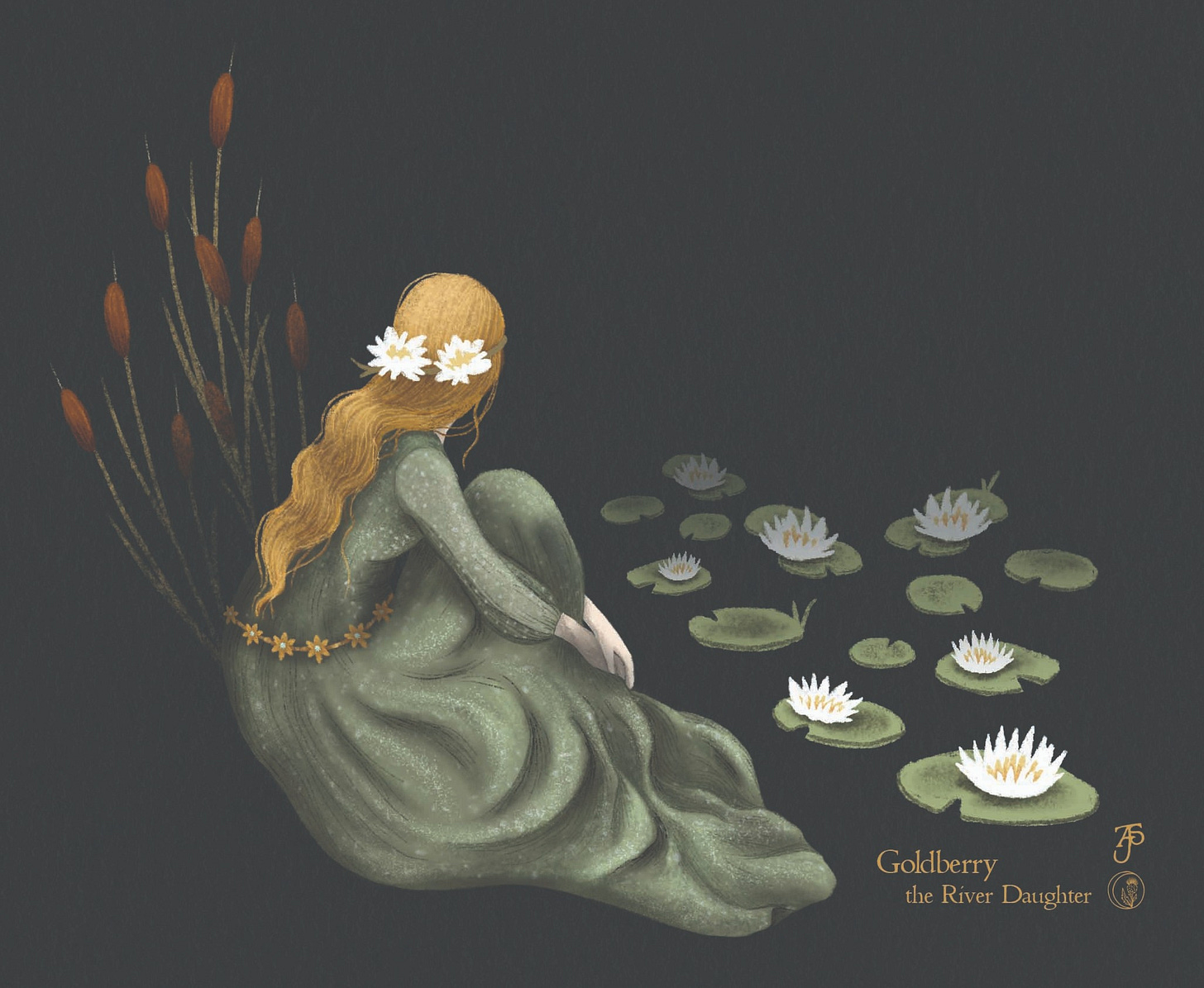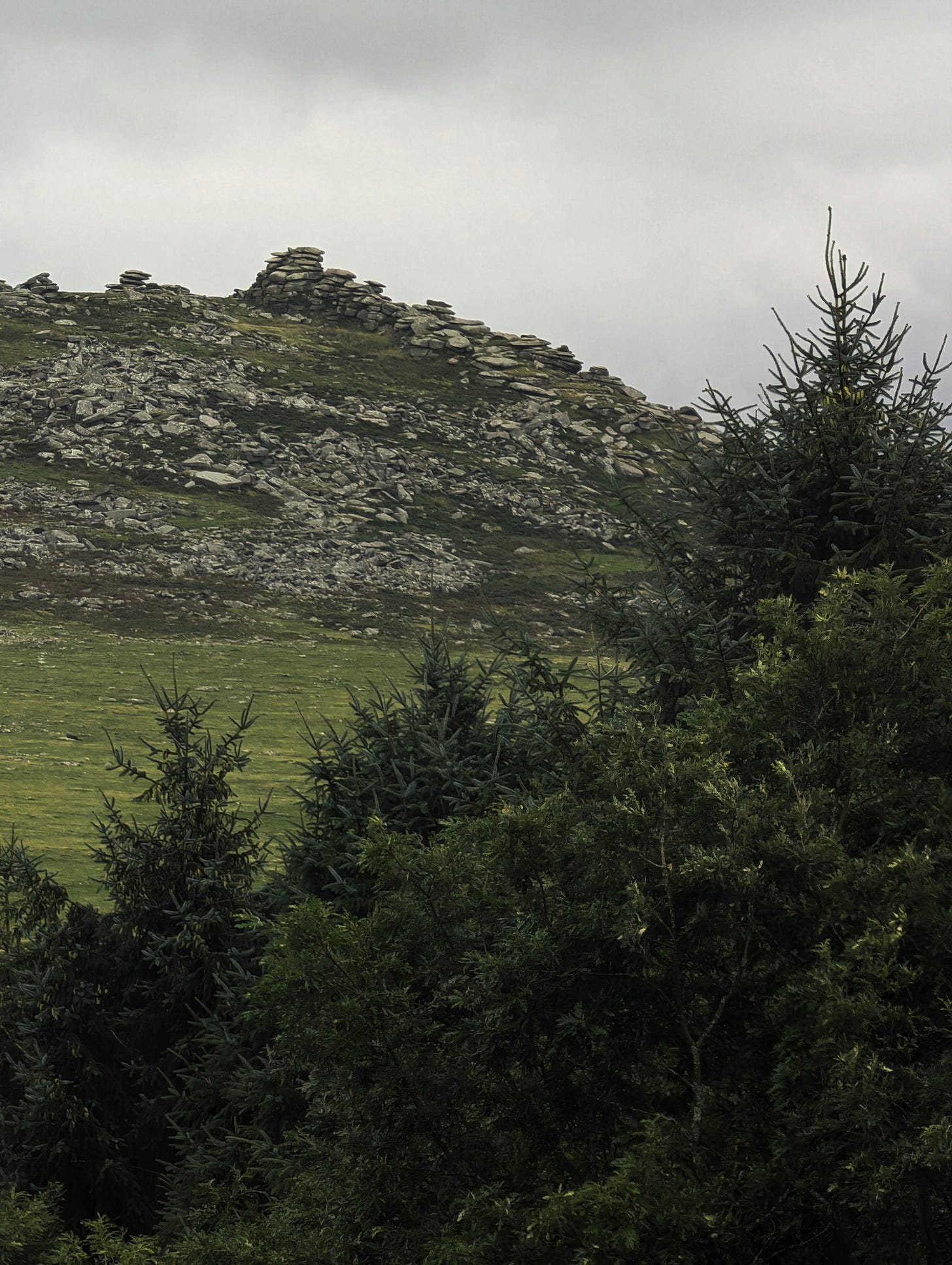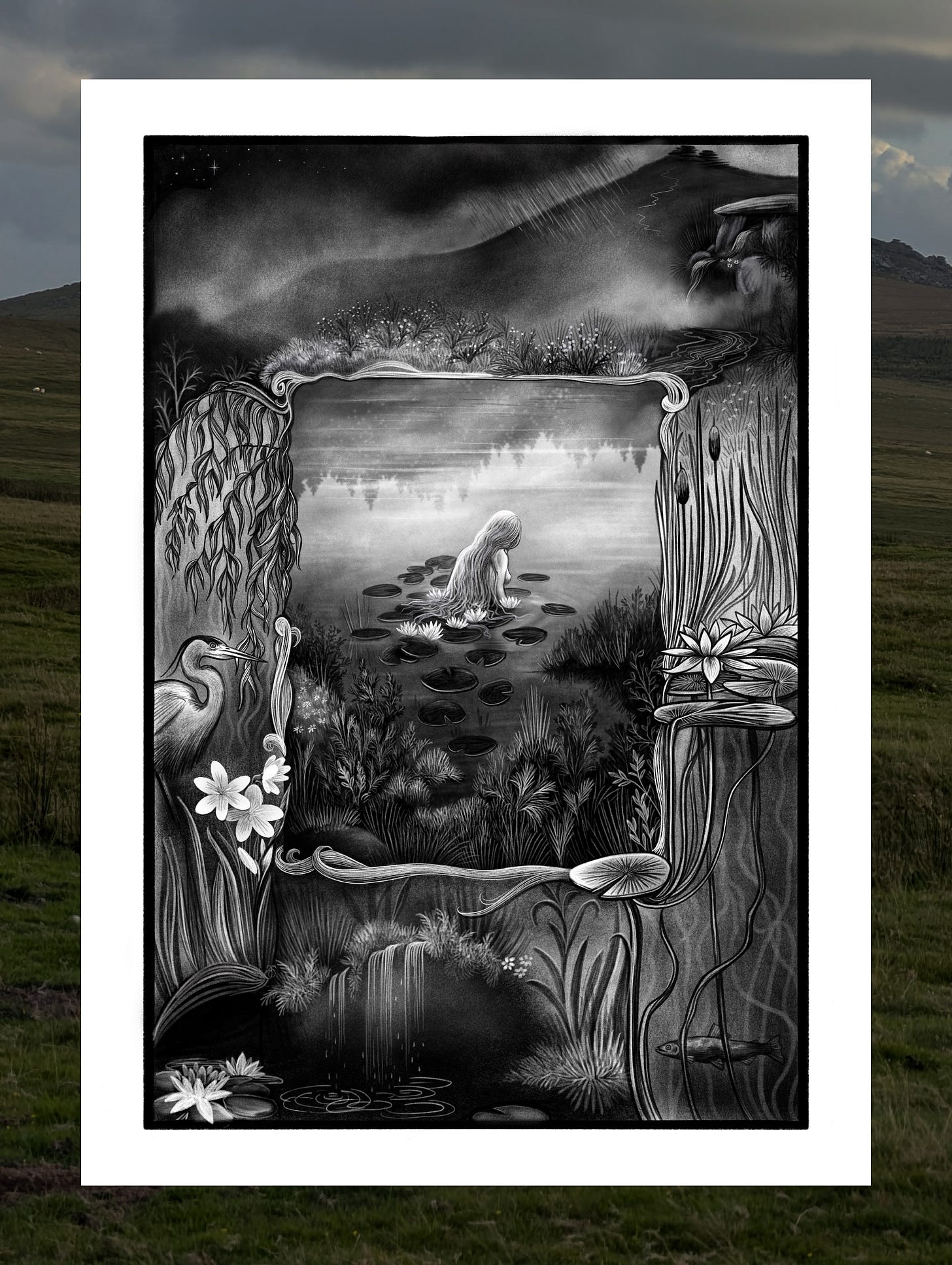For my contribution to this year’s Tolktober - a community drawing challenge lovingly run by Rogue Print Co - I chose the prompt of Goldberry, Tom Bombadil’s enigmatic wife/water nymph/we-aren’t-sure-what from The Lord of the Rings.
I was staying on Dartmoor when I was beginning to think about my choice for this year. Looking up at Roughtor and its rocky neighbours - watching the springs tinkling down through heather in secret rivulets - had me dreaming of the Barrow Downs so clearly that it became the perfect setting to draw Goldberry in. This part of Dartmoor also happens to be absolutely riddled with earthworks - including the remains of a longhouse, reminding me of Alan Lee’s painting.
In The House of Tom Bombadil is my favourite chapter in The Lord of the Rings. I find it so overwhelmingly comforting, but also full of unanswered questions. Tom himself is enigmatic, but Goldberry is where my true interest lies. I have drawn her before, in a different style and with a pre-Raphaelite Ophelia in mind. I wanted her to remain somewhat mysterious, so she is facing away.
Goldberry appears as a beautiful woman. She is earthly, but also ethereal. She spans the worlds of nature, magic and home comforts. She is full of laughter, but also shows a depth of knowledge and feeling. She seems part naiad, part housewife, and though Tom refers to her singing on a rainy hilltop as her “washing day”, he does not seem to have any bind or expectation upon her to fulfil that role. He is the one who is bringing waterlilies to float in basins around her feet, and she is, more often than not, running free in the highlands.
In his letters, Tolkien says that she is a living representation of the changing of the seasons in the river-lands in autumn. Her hair ripples, her movements rustle. Her footsteps are like a stream falling gently away downhill, over cool stones in the quiet of night. It is so evocative of a moorland stream that it draws comparison to the Middle-English poem Maiden in the mor lay, in which the mystery girl lives on a diet of flowers and spring water. A similar notion can be found in Tom’s gentle teasing of the Hobbits that if they do not come quickly to the breakfast table, they will get grass and rain water.
I don’t pretend to know what Goldberry is. Frodo dreams of light behind a rain curtain being drawn back, and a sweet voice singing. It assumedly represents the Undying Lands, but it is so close in proximity and theme to Goldberry that I have always equated the two, somehow. Perhaps she is a maia, or descended from one. She is not an elf, but she has the otherworldly qualities of one. She is the River-Woman’s Daughter, and that is magical enough for me.
In my illustration I wanted to capture this feeling of running, falling water, from rain to river. Goldberry’s rain song - (Led Zeppelin plays in the distance) - was the primary inspiration:
it seemed plain to them that the song was a rain song, as sweet as showers on dry hills, that told the tale of a river from the spring in the highlands to the sea far below.
The rain can be seen falling on the hilltop, where the rocky tors give rise to springs of soft water, falling down to the river and its pools below. The starlight, so prominent in this chapter, twinkles behind the clouds.
My Goldberry is as she was before Tom found her. Not clad in silver-green, but young and wild in the rushes and amongst her beloved waterlilies, under the shadow of the forest. She is somewhere between the spring on the hilltop and the deep pools below. She is more closely connected to the earth and the water in her nakedness, but turning away, she remains a mystery.








